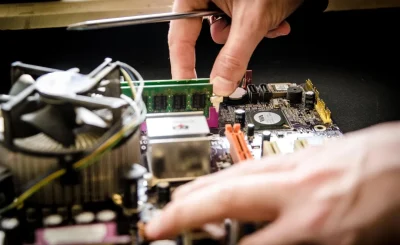Are you tired of making costly mistakes in PCB production? Look no further. Our experts have compiled a list of lessons learned from their own experiences to help you avoid the same pitfalls.
From design verification to component selection and testing, we’ll guide you through the process, ensuring your success. Don’t ignore the importance of a manufacturable design.
Join us on this journey of learning and belong to a community that values excellence in PCB manufacturing.
Lack of Design Verification
You should always regularly perform design verification to avoid mistakes in PCB production. Common design errors can have serious consequences on the functionality and reliability of your circuit board.
A thorough design review is crucial to identify and rectify any potential issues before moving forward with production. By conducting design verification, you can ensure that your PCB layout adheres to industry standards and best practices.
This includes checking for proper component placement, trace routing, and signal integrity. Additionally, design verification helps in identifying any potential manufacturing or assembly issues that may arise.
It provides an opportunity to catch errors early on, saving you time, resources, and the headache of dealing with faulty PCBs. Don’t underestimate the importance of design review, as it plays a vital role in producing high-quality, error-free circuit boards.
Insufficient Component Selection
Insufficient component selection can lead to significant issues in PCB production. When choosing components for your PCB, it’s crucial to ensure component compatibility and proper component placement.
Component compatibility refers to selecting components that are suitable for the intended application and can function together harmoniously. Using incompatible components can result in electrical failures, performance issues, or even complete system malfunctions.
Additionally, proper component placement is essential for optimal functionality and reliability. Placing components too close together can lead to overheating, while placing them too far apart can result in signal degradation or increased noise.
Careful consideration of component selection and placement is vital to ensure the overall success of your PCB production.
Inadequate Testing and Quality Control
Are you ensuring adequate testing and quality control in your production PCB process?
It’s crucial to recognize the importance of prototyping and iteration in PCB testing. Prototyping allows you to identify any potential design flaws and make necessary improvements before moving forward with production. Through iteration, you can fine-tune your designs and optimize the functionality of your PCBs.
Additionally, implementing rigorous quality control measures and standards is essential to ensure the reliability and performance of your PCBs. This includes conducting thorough inspections, using advanced testing equipment, and adhering to industry standards. By doing so, you can prevent defects and minimize the risk of failures, ultimately enhancing the overall quality of your PCB production.
Prioritizing testing and quality control in your production process is vital for delivering dependable and high-quality PCBs to your customers.
Ignoring Design for Manufacturability
One common mistake in PCB production is neglecting the consideration of design for manufacturability. Design optimization is crucial to ensure that the PCB can be efficiently and cost-effectively manufactured. Ignoring this important aspect can lead to various issues, such as production delays, increased manufacturing costs, and poor product quality.
Here are four key reasons why design for manufacturability should never be ignored:
1. Manufacturing constraints: Failure to consider manufacturing constraints during the design phase can result in designs that are difficult or impossible to produce. By optimizing the design for manufacturability, you can avoid issues such as complex routing, excessive use of vias, and component placements that impede the manufacturing process.
2. Cost reduction: Design optimization can help minimize the number of manufacturing steps, reduce material usage, and improve overall manufacturing efficiency. This leads to cost savings, as well as faster production times.
3. Improved quality: Considering manufacturability during the design phase allows you to identify potential issues and make necessary adjustments. This helps prevent manufacturing defects, improves yield rates, and ensures higher product quality.
4. Time-to-market: Neglecting design for manufacturability can lead to production delays, as issues may arise during the manufacturing process. By optimizing the design, you can streamline the production process and reduce time-to-market, giving you a competitive edge.
Conclusion
In the fast-paced world of PCB production, avoiding mistakes is crucial for success. By following the advice of experts, such as verifying designs, selecting components carefully, conducting thorough testing, and considering manufacturability, you can minimize errors and ensure high-quality products.
Remember, a well-executed PCB production process is like a finely tuned symphony, where each component harmonizes perfectly to create a seamless and reliable end result.
So, embrace these lessons and embark on your journey towards excellence in PCB assembly.








